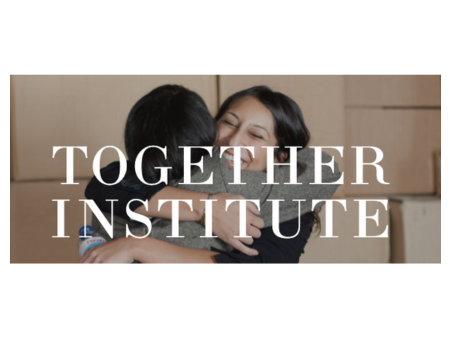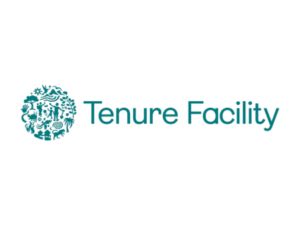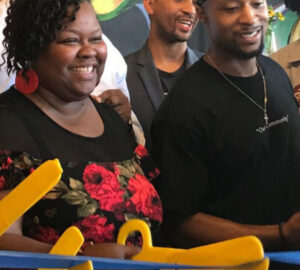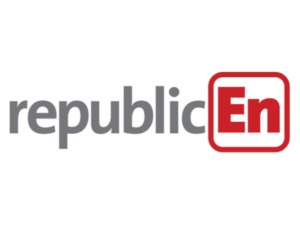Together Institute is a collective that helps purpose-driven organizations build communities and networks. The support organizations with community strategy, community development, community programming and community training.
Fabian Pfortmüller of Together Institute spoke with Lissa Harris on February 6, 2024. Click here to read the full conversation with insights highlighted.
Lissa Harris: If you could start off by introducing yourself, your organization and just talk about the problem that you’re working on and how you are working to solve it, that would be great.
Fabian Pfortmüller: My name is Fabian Pfortmüller. I’m based in Amsterdam, and I run an organization called the Together Institute. The inquiry at the center of Together Institute is how to weave thriving communities and networks.
There are a lot of good things happening in the world, but a lot of those things happen in isolation; or they happen in disconnection from each other. What we work to solve is how to bring people into not just connection, but caring relationships with each other so that they can support and strengthen each other — which unlocks the collective as we are trying to move towards a different world.
Lissa Harris: Who are the direct beneficiaries of your work? How do you engage with them?
Fabian Pfortmüller: Our focus is on people. We call them community weavers. People who run, lead, co-create — or have some kind of active position in — purpose-driven communities and networks. Many of them might be volunteers who happen to take an active position in those communities and networks. Some of them might be paid coordinators in those communities and networks. The way we interact and support them is by providing trainings for them. We create frameworks and open sourced tools especially around knowledge tools for them.
And then, part of what we do is consulting and advisory work where we work with specific communities and networks. Lastly, we bring community weavers together into communities of practice where they can learn from and support each other.
Lissa Harris: What do you mean by purpose-driven community? Is there a specific type of community that you’re looking to engage with? How do you find people to do this work?
Fabian Pfortmüller: A community is a group of people that have relationships with each other around some shared purpose. There’s a gazillion groups like that in the world, and we are most interested in ones that come together to transform the world around them. It might be communities of changemakers, or it could be communities that are dedicated to advancing a certain topic — bringing together change leaders around health or around climate.
We’ve also worked with intrapreneurs within companies who are trying to transform organizations: people within the UN system who are trying to bring a different culture into the UN; scientists within WWF; people within WHO who are specialists around immunization. Basically, we’re trying to bring these people together to help them learn, connect, and do their work in a collective form.
Lissa Harris: So when you say communities, you don’t mean a geographic community like a neighborhood. This is more advocates or activists or groups of people that are working on a social change problem that are not necessarily physically affiliated?
Fabian Pfortmüller: Correct. I think the traditional definition of community was really location-based, but that changed a lot over the last fifty years. Community for us is a web of relationships; these people really know and — depending on how good the communities are — care for each other. There’s also some kind of purpose in the middle. Sometimes that reason to connect is geography — because you happen to care about your city or neighborhood or the waterways of the Catskills — but these days, it’s often thematic.
Lissa Harris: How do you find people to engage with? What’s the way that you engage?
Fabian Pfortmüller: We do a lot of writing. We write a blog where we write our learnings, which is a big way people find us. We develop open source tools. One of them is called the Community Canvas, which is kind of an open source tool for community building. So that’s how we engage with people, by putting knowledge out there, which creates invitations for people to come into conversation with us. That’s kind of one of the biggest ways.
And then it’s a small world. There’s not that many people doing this type of work, so you get to know other people who do community and network weaving work. And a lot of what we do is word of mouth.
Lissa Harris: What makes your approach distinctive from other folks that are working on the similar space?
Fabian Pfortmüller: A lot of others have focused on investing in technology, websites, and social networks, but for us, infrastructure is the last thing to focus on.
Our focus tends to be on the relationships, less on the structure. Our hypothesis is that what makes a community a community — and what strengthens the community — is the focus in relationships. We look at the relationships and how to strengthen those relationships, which is a slower, less sexy answer, because it’s less tangible. That’s one of the big challenges of this work: it’s very intangible; but that’s how we really differentiate ourselves, by really focusing on the relationships and relational health of the group.
Lissa Harris: Is there an example of a story that illustrates the impact of the work that you do?
Fabian Pfortmüller: We just finished working with a community of philanthropy infrastructure practitioners in Europe. They are a group who work within philanthropy but feel like philanthropy is broken and needs to change; this community is a safe, alternative, experimental space for them to come together. We’ve been supporting them to create a co-created space for themselves. There were two people at the center who were mostly holding everything.
One of the main challenges in our line of work is that a lot of people who run communities burn out because they give so much to it but are not appreciated or remunerated. It’s just taken for granted. It can be hard to hit capitalistic metrics that show your board what you’ve achieved when the product of your work is that people trust each other more or are healthier. Those metrics don’t show up for most boards.
What we’ve done over the last six months is walk with this group of people to help them weave in more and more people so that it becomes a co-created group where more people become involved in shaping, taking responsibility, and growing a sense of ownership which distributes the load and makes it healthier for everyone involved. Meanwhile, they also worked to clarify the fire in the middle: the core purpose and values.
Lissa Harris: What insights have you learned through this process that others could take from?
Fabian Pfortmüller: A lot of our work is actually very obvious; it’s just that people don’t actually do it. One insight is that investing in relationships really works and has long-term effects that allows groups to be more productive. It allows groups to collaborate more, build trust, and feel healthier. It has a really beautiful impact.
We’re talking about five-, ten-, twenty-year timelines where you can really see the impact of investing into collective relationships.
While most organizational timelines are quarterly or yearly KPIs [key performance indicators], that’s hard competition for communities and networks. The key lesson for us is that we try to continuously support. As I mentioned, a lot of people burn out because they care deeply and the work is very intense. It’s emotional care. You spend a lot of time doing that.
These days everyone talks about co-creation; everyone wants to co-create. But actually, co-creating has a downside to it: it takes a lot of energy and time to bring a lot of people together, to bring a lot of voices in. You have to have a lot of one-on-one calls.
If we don’t appreciate that, if we don’t resource that, these people will burn out and the whole thing will fall apart. A lot of these go in a five to seven year cycle where someone is intrinsically motivated to do it for the first two to three years, but then they burn out and leave. Often, it kind of falls apart until someone else might step in and do it again. And the cycle starts again. It’s a cycle we see a lot, so we’re trying to break it.
We live in a world where there is something clearly wrong with the traditional top-down leadership — where one person is deciding and telling others what to do — but we’ve swung the pendulum, at least in my world, where everyone feels like we should all co-create everything.
It turns out, both of those extremes are not healthy nor sustainable at all times because I’ve also seen communities fail to co-create because they try to be everything for everyone. There needs to be some kind of middle ground. Groups, communities, and networks also need leadership. They need a few people with a vision and direction that invite all the people in.
A lot of the successful groups and communities are the ones where an individual offers a vision and direction, but asks for feedback and support on how to shape the idea forward. There’s someone who really embodies a sense of leadership and rhythm. We’ve learned how important cadence, regularity, heartbeat, and rhythm are for groups.
We like to say that a community is like a muscle that grows when you practice together; you need a regular form of practice, of doing things together. At the beginning, the muscle will be quite weak, but as you do things regularly, the collective muscle grows.
Another key lesson is that unequal participation is actually very natural. We work with this three concentric circle model where the inner circle does most things, the middle circle are active members, and the big outer circle are loosely connected. Most groups we’ve seen have 90% of people who are loosely connected and relatively passive. About 9% are in that middle circle, and 1% is in that inner circle.
What a lot of organizations, communities and networks do wrong is that they’re trying to convert that outermost circle into becoming more engaged and active rather than supporting the people who are already showing up.
It’s actually very natural for any group to have all of those three subgroups at the same time; that will continue to rotate. If you zoom out long enough — over ten- or twenty-year cycles — you’ll see how ‘Lisa’ at one point was totally on the outside, but then after five years, she changed jobs and suddenly she becomes more engaged. Patience really pays off.
Lissa Harris: How do you measure success? What are the metrics that you use or the evidence that you look to see if you’re making progress as an organization?
Fabian Pfortmüller: Our measure of success is more healthy community weavers. Do they feel healthy? Are they cared for? Are they not burning out? That’s our internal way of how we look at success.
In the projects we do, it’s usually defined around how active and engaged are the communities. We look at their levels of trust and connectivity as well as the density of relationships. We are very focused on the proxy that we use — are the people that care for these groups cared for?
Lissa Harris: And how do you measure that? That sounds pretty qualitative.
Fabian Pfortmüller: Very qualitative. Welcome to my world! That’s the big crux of this work. We continue to have a hard time making the case for it. There are metrics for it, but they’re so qualitative, they’re very hard to actually measure.
You can do survey work, but you’d have to survey people every three to six months. That’s very hard to actually do. So, a lot of it is very gut-sensy. It’s very imprecise. That’s the biggest reason why this work has not really taken off more broadly; we continue to have a hard time making the case for it with traditional success metrics.
Lissa Harris: How has your thinking changed on that through doing this work?
Fabian Pfortmüller: There’s a lot of conversation around success; in my world, they call them relational success metrics. There are two lines of thought there:
There are people who say there are things that just can’t be measured, and we should accept that the world is not all there just to be measured. They view it as part of our evolution as human beings to accept that love cannot be measured. There are many things in the world that are qualities that cannot be measured, but that does not render them unimportant or inexistent.
Then there are the people who are trying to somehow find metrics for this; who believe that there are better tools out there to see who shows up at events or to see what engagements are in WhatsApp groups and things like that.
I believe in the first dimension, but I have to engage with the second one, otherwise I wouldn’t get paid at the end of the day.
Lissa Harris: There might be some tension there with what you were saying earlier about groups trying to convert the 90% … by trying to boost those measurable metrics, are you leaning into the wrong thing?
Fabian Pfortmüller: Totally. Absolutely. You can just go for big numbers. You can talk about how many events you hosted, but it can still mean nothing if people didn’t feel more connected, or feel healthier; if they didn’t feel safe at those gatherings. There’s an underlying philosophical dimension there.
Charles Eisenstein is an American author who formulated a theory for the underlying issue behind all the polycrises we’re facing at the moment. In his view, we currently live in a story — a story is the way we make sense of the world is a story — of separation. In a world of separation, we are separate from each other; we operate separate from the natural world.
If you are separate, you have to compete because everything else is ‘the other’ and the way to work in that kind of world is through dominating or controlling the other. He says that the reality is actually that the story is just a story.
Another story could be that we are actually deeply interconnected and deeply interdependent on each other — between humans and other forms of life. And if we lived in that story, this type of work and this type of being would make much more sense. But right now, we’re fighting. If we assume that we’re all separate beings, then we have a strong incentive to stay separate. It’s complicated.
Lissa Harris: Sometimes social innovators learn as much from things that don’t work as things that do. Is there an example of something that you tried that didn’t work yet you learned something from?
Fabian Pfortmüller: One thing that hasn’t worked in communities is to ignore the history and past of groups. Any group that has existed for longer than a heartbeat has some kind of history. We tend to ignore that and prefer to try something new. But it’s always there; it’s always in the culture of it.
For example, there was a German foundation that got wealthy and could trace its funding from the Nazi times — someone wrote a book about that two or three years ago — and they basically chose to ignore it instead of engaging with it. Now, it’s kind of come up and exploded in the community.
Lissa Harris: Is there something from your own work where you tried going down a path but then decided to not do that anymore?
Fabian Pfortmüller: We used to try to really co-create as much as possible with everyone, and we realized that doesn’t work. It’s exhausting and burns people out.
We’ve learned a lot around money and the incentives around money in groups. Money can create the wrong incentives for people to show up, but it’s still necessary for people to be able to do the work. Finding that balance is difficult. We’ve made a lot of mistakes there, and we’re still not sure what the right balance is.
There’s also something around power dynamics in the rooms that we continue to learn about and have made a lot of mistakes around. For example, if the White House created a community of journalists, you would probably show up to it. But are you actually just excited about the group because the convener is so powerful and has a prestigious name? How do you balance that with finding out people’s genuine motivations? We’ve learned that the hard way especially when working with organizations who have strong reputations, brands, or whatnot.
Lissa Harris: Is there a specific example of when you tried hard to work on co-creation and it didn’t work out?
Fabian Pfortmüller: In this most recent project with this Pex group, we were just inviting people into co-creation.There were many processes for people to actually get invited into co-creation, and it exhausted the core organizers. They were partially paid to do this, but it just became so much for them to hold all these different conversations.
It created more work for them, and it gave people excuses to offload all the ideas they wanted them to do instead of having other people step into actual agency and ownership. That’s one of the big questions that we’re grappling with. This is my opinion, but I feel like we live in a time where a lot of people have actually lost their sense of agency because we live in a consumer society.
If I want something, I can pay for someone to deliver it to me. But the idea that someone shows up to a group and is asked what they wanted to do — where their energy is, what they want to take ownership of — is actually kind of a strange concept. What ends up happening is that people tell us their ideas about what we should do instead of having a sense of ownership and running with it. So, we continue to have a hard time with co-creation.
Lissa Harris: What are the big barriers to your work that you have not yet been able to overcome?
Fabian Pfortmüller: Short-term thinking living in a capitalistic world with capitalistic metrics — the philosophy of separation, quarterly reporting cycles, board governance models — where the people ultimately making decisions are from an older generation that do not understand the relational approach.
As I mentioned before, people are burning out. There’s an overloading of care work onto certain people and an abuse of the word community and networks by technology and marketing companies to allude to something beautiful when they’re actually just trying to use it to sell stuff.
People just have no time. That’s a huge structural issue. People are just overwhelmed and have too much going on. They like community, but they have to hustle with two jobs, so the idea of doing volunteer work or investing in relationships is conceptually nice but not practical.
Lissa Harris: How are you working to advance systems level change? What are your approaches to that? What are the tools you use to try to bring broader systemic change to this realm?
Fabian Pfortmüller: Our work is deeply systemic because we try not to fix a problem short term. Often, these communities are convening a whole system to become in relationships with each other. At the very core of systems change work is actually relational work; but that doesn’t happen — at least not naturally — without getting some support. Our work is to help with that: for a system to start being in dialogue and in collaboration with each other.
We think a lot about how this can become a field in which community building and network weaving is accepted, appreciated, funded, and resourced over time.
Lissa Harris: What do you think is most needed from other actors or partners in this space to advance systems level change?
Fabian Pfortmüller: Start investing into relational approaches. Fund and resource the people who are doing this type of work. Create five to twenty year timelines. Develop different sets of metrics that are relational metrics. Be open to emergent outcomes.
Lissa Harris: How do you think you see your work evolving over the next five years?
Fabian Pfortmüller: There are early signs that this work is becoming more accepted and a little more appreciated. If so, hopefully, we can support that becoming more common where there are clear job descriptions, career paths, and well-resourced positions of people who do this work in purpose-driven organizations across the world.
Lissa Harris: Any advice for people who are getting into something that they have a great passion for but are under-resourced?
Fabian Pfortmüller: It’s important to be both idealistic and practical about money. I continue to make that mistake of being more on the dreamy and idealistic side, which is beautiful. I just also think it’s important to be real about maybe doing it with a side gig or something else. Thinking about the practicality of money from the beginning is not a bad thing. Live the dream; be passionate about it. Try it. But there’s also a Venn Diagram where that overlaps with the realities of finances.
Click here to read the full conversation with insights highlighted.
Lissa Harris is a freelance reporter and science writer (MIT ’08) based in the Catskills of upstate New York. She currently writes about climate, energy, and environment issues from a local perspective for the Albany Times Union, her own Substack newsletter, and various other digital and print publications.
* This interview has been edited and condensed.
Learn about other organizations working to build community.







